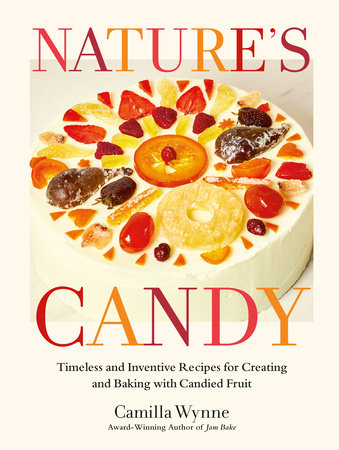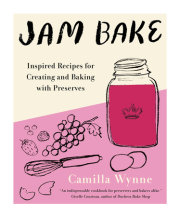Excerpt from the Introduction I’ve dabbled in candying my own fruit ever since pastry school, feeling quite all-powerful and armed with the skills to make my own
orangettes, which I previously had to shell out money for at pastry shops. I’m mostly of British heritage, so making my own candied fruit for family classics like fruitcake and hot cross buns was a revelation that resulted in a much better baked good. I once even painstakingly candied a whole Victorian pineapple for a friend’s birthday after being inspired by
À la Mère de Famille, the cookbook by Julien Merceron. The pineapple still resides on her mantelpiece, like a specimen in formaldehyde, though of course its preservative is sugar.
It wasn’t until I started teaching candied fruit techniques online during the pandemic that I really, really, really got into candied fruit. To be honest, I was shocked by the immense popularity of the workshop. Turns out I’m not the only one bewitched by glistening fruity jewels.
So allow me to be your Virgil. As in my workshop, I begin with a short history of fruit being turned into candy across the globe, followed by a look at the science behind sugar-preserved fruit. It may look like magic, but it’s not! I then share some methods that I’ve tested and tested to make candying as easy as possible—because I am a lazy Taurus who would rather read novels than measure syrup concentrations all day. It might take a little practice to figure out when a batch is perfectly candied, but so does almost everything worth doing. From there, you sample your candied fruit or glaze it, dip it in chocolate, or sugar it. Then bake with it!
The second section contains delicious recipes illustrating some of the myriad ways you can incorporate candied fruit into your baking and confectionary. That said, nearly every recipe can stand on its own two feet even if you don’t have time to candy your own fruit! Of course, the recipes herein are informed by my prejudices and preferences, as in any cookbook. For instance, I don’t like candied melon; melon, in my opinion, is just simply best consumed fresh. But if you want to make homemade
callisons, this book will still teach you how to candy the melon. In fact, with this book you will be able to candy everything! Except limes. I still haven’t figured those out.
So welcome to the sweet, fascinating world of candied fruit, one of the most ancient and gorgeous preservation methods in the universe.
Copyright © 2024 by Camilla Wynne. All rights reserved. No part of this excerpt may be reproduced or reprinted without permission in writing from the publisher.
















